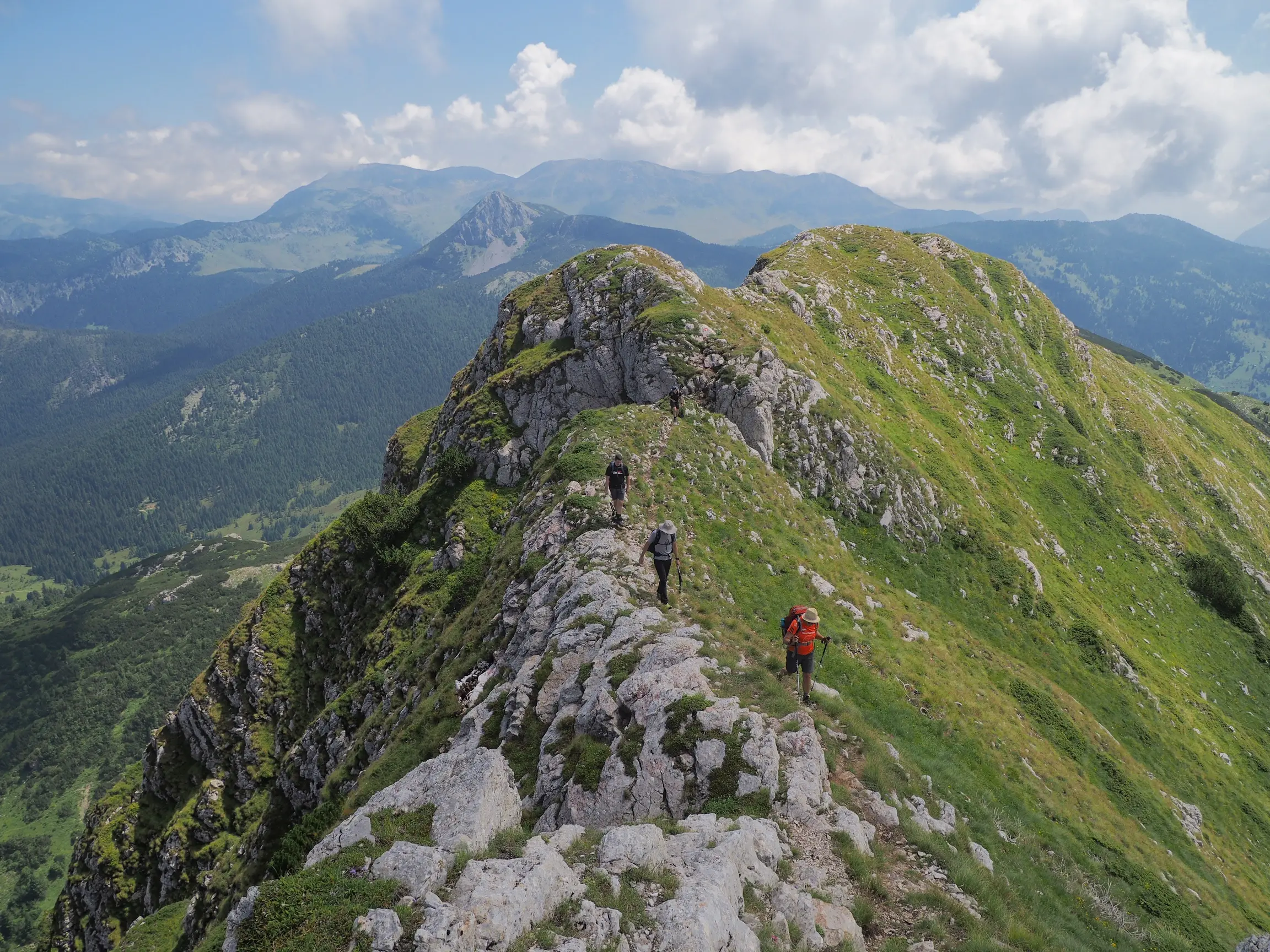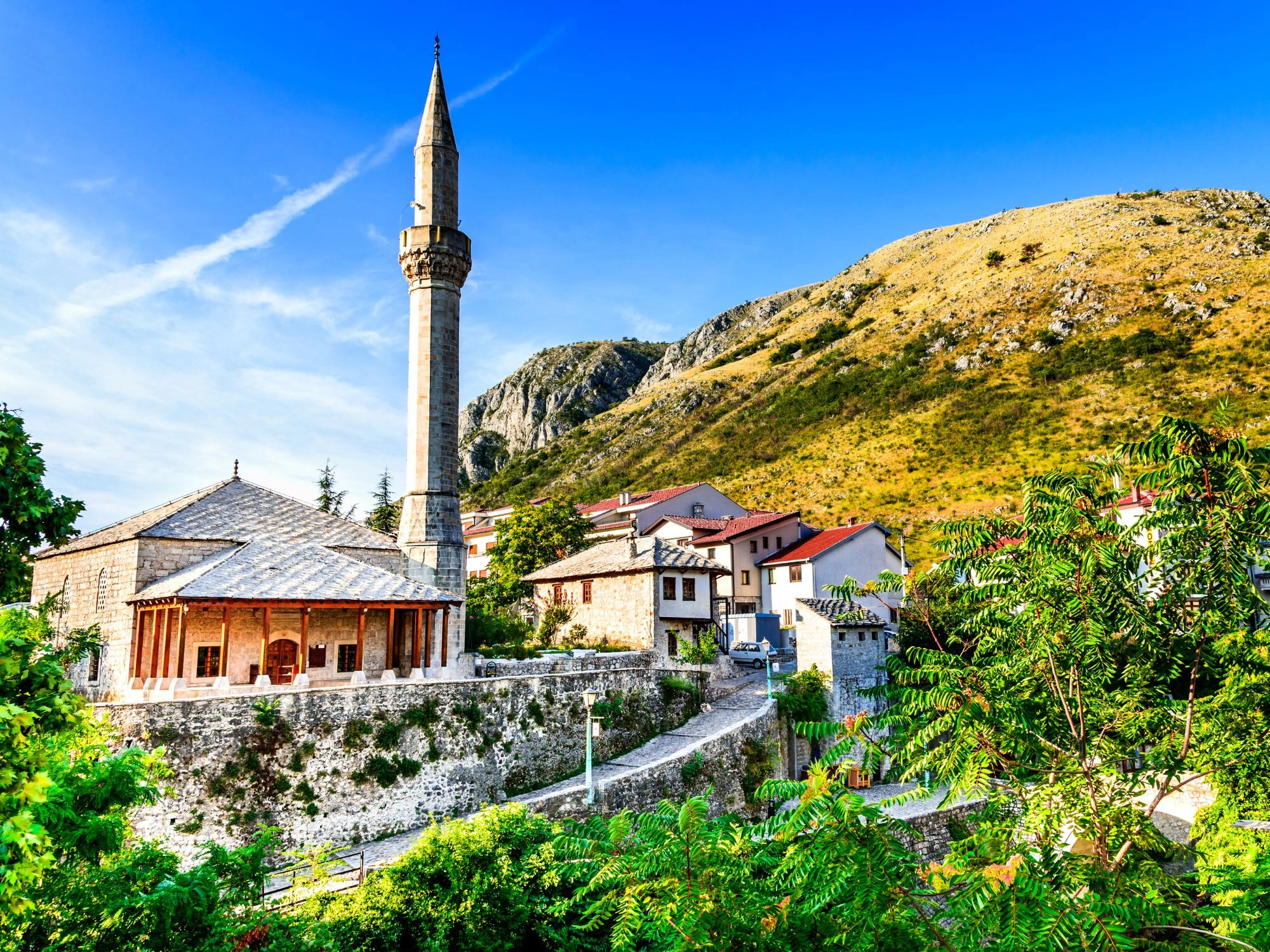Durmitor National Park Montenegro
.webp)
Durmitor National Park Montenegro
Durmitor National Park adventure delivers big-mountain drama, glacial lakes, and hearty mountain culture in a compact corner of northern Montenegro. If you love ridge walks, river canyons, and food that warms you from the inside out, this is your playground - and Žabljak is the friendly base that makes it easy. Snow-dusted limestone peaks guard 18 glacier-carved “mountain eyes,” with the Tara River Canyon cleaving the massif and the elegant Đurđevića Tara Bridge framing the views. Trails range from forest strolls around Black Lake to lung-busting scrambles toward Bobotov Kuk, so you can dial the effort up or down day by day. Between outings, refuel with kačamak, cicvara, and lamb under the sač, or wander high-plateau hamlets like Trsa and lakeside Plužine for a taste of katun life. Come spring for lively rafting, July for wildflowers and long days, or October for golden forests and crisp, clear horizons.
Highlights
- Black Lake (Crno Jezero) — The park’s poster child sits beneath pine forests and the jagged Međed peak. It’s actually two glacial lakes joined by a narrow strait that can dry up in summer, changing the shoreline and giving photographers fresh angles.
- Tara River Canyon — Europe’s deepest canyon in places, the emerald Tara slices between limestone walls and old-growth spruce. Whitewater here ranges from spring thrills to late-summer family-friendly floats, with the graceful Đurđevića Tara Bridge as a must-see viewpoint.
- Bobotov Kuk — At 2,523 m, Durmitor’s highest summit rewards fit hikers with sweeping views over the massif’s karst plateaus and “mountain eyes” (the park’s 18 glacial lakes). Clear mornings are your window; afternoon clouds build fast.
- Žabljak — The main gateway town and one of the Balkans’ highest settlements (around 1,450 m). Expect gear shops, cozy cafés, ski lifts in winter, and quick access to trailheads—you can stroll from town to Black Lake in about 30 minutes.
- Plužine — A small lakeside town framed by the cobalt waters of Piva Lake. It’s the western door to Durmitor via the Piva Canyon and a popular stop for the panoramic “ring” drive across the Piva Plateau.
- Šavnik — A quiet crossroads south of the park where three rivers meet. Traditional stone houses, mountain fare, and local markets offer a glimpse of rural life beyond the main tourist path.
- Trsa (village) — A classic high-plateau hamlet where shepherd culture lives on. In summer, nearby katuns (seasonal herder settlements) produce tangy cheeses and kajmak you’ll see on menus across the region.
- Mala Crna Gora (village) — A remote hamlet perched between the Tara and Sušica canyons. Its isolation kept wooden architecture and customs intact; come for the sense of time standing still rather than services.
Local Life, Food & Traditions
Durmitor’s culture is mountain-born: sturdy, neighborly, and proud. Summers move to the rhythm of the katun—families tending herds on high pastures, making skorup (clotted cream) and fresh cheeses that end up in simple, satisfying dishes. You’ll hear toasts of rakija, see stacked firewood and haystacks lining lanes, and meet hosts who insist you try “just one more” plate.
On the table, expect comfort. Kačamak (cornmeal and potato mash with cheese), cicvara (rich, buttery cornmeal), and slow-roasted lamb under the sač are staples after a day outside. Bakeries turn out warm burek in the mornings; cafés in Žabljak fuel hikers with strong coffee and honey-drizzled priganice.
Wildlife still finds room here. Chamois skip across scree, eagles ride thermals above the ridges, and dense spruce and fir shelter foxes and deer. Even if you don’t spot them, their presence adds a certain hush to the forests.
Insider Tips
Carry a layered system and offline maps. Weather flips quickly at altitude—sun at Black Lake can turn to wind and sleet near a pass. In shoulder seasons, lingering snowfields make microspikes and trekking poles smart. Many mountain huts and rural restaurants prefer cash; the euro is the currency and ATMs are concentrated in Žabljak and larger towns. If you’re driving the scenic Durmitor “ring” (P14, locally “Durmitorski prsten”), check road conditions—sections can close or stay snowbound well into May.
Start early for popular spots like Black Lake and Đurđevića Tara Bridge; parking fills and trails stay calmer before 10:00. Afternoon storms are common in midsummer—pack a shell, warm mid-layer, hat, and sunscreen, then aim for summits before noon. Water is generally available in towns, but carry at least 1–2 liters per person on ridge days; springs can run low by late August. Reception can be patchy in the canyons—download offline navigation and let someone know your route.
On the trail, follow waymarks (red-white circles) and respect closures; karst terrain hides sinkholes and loose scree. Keep 50 m from wildlife, store snacks securely, and leave no trace. For rafting, choose licensed operators, wear the provided gear, and ask about river levels; spring melt means bigger waves, late summer is gentler. If you’re self-driving, fuel up before mountain loops, watch for sheep on blind corners, and be ready to reverse on narrow stretches.
Useful words to know
Zdravo / Dobar dan — hello / good day
Hvala — thank you
Molim — please / you’re welcome
Izvinite — excuse me / sorry
Račun, molim — the bill, please
Gdje je…? — where is…?
Koliko košta? — how much is it?
Voda / still ili gazirana — water / still or sparkling
Planina — mountain; Jezero — lake; Staza — trail
Katun — seasonal herder hamlet
Ispod sača — baked “under the bell” (dome lid)
Foods to try
Kačamak — cornmeal–potato mash with cheese or kajmak; perfect after a big hike.
Cicvara — rich, buttery cornmeal with heaps of dairy.
Jagnjetina ispod sača — slow-cooked lamb under a metal bell, tender and smoky.
Durmitorski sir & skorup — local cheeses and clotted cream from high pastures.
Pastrmka — fresh mountain trout, often grilled simply with herbs.
Priganice — bite-size fritters served with honey or cheese at cafés and guesthouses.
Njeguški pršut — Montenegro’s famed smoked ham; often on platters with cheese.
Burek / pita — flaky pies (cheese, spinach, or meat) for an easy trail breakfast.
Ćevapi or pljeskavica — grilled meats with flatbread and onions.
To drink: rakija (fruit brandy) in tiny toasts; Nikšićko pivo (local beer) with hearty fare.
Why it belongs on your list
Durmitor is Montenegro turned up: sawtooth peaks, glassy lakes, deep canyons, and mountain towns that still live by the seasons. You can keep it gentle with forest loops and lakeside strolls or push higher for ridge views that reach forever—then warm up with honest, home-style food. If you’re roaming the Balkans, Durmitor pairs naturally with the Bay of Kotor, Biogradska Gora, the Tara and Piva canyons, or a cross-border hop into Bosnia and Herzegovina. Want more inspiration? Explore our tours across Montenegro and the wider region to map out a journey that fits how you like to travel.





.webp)




